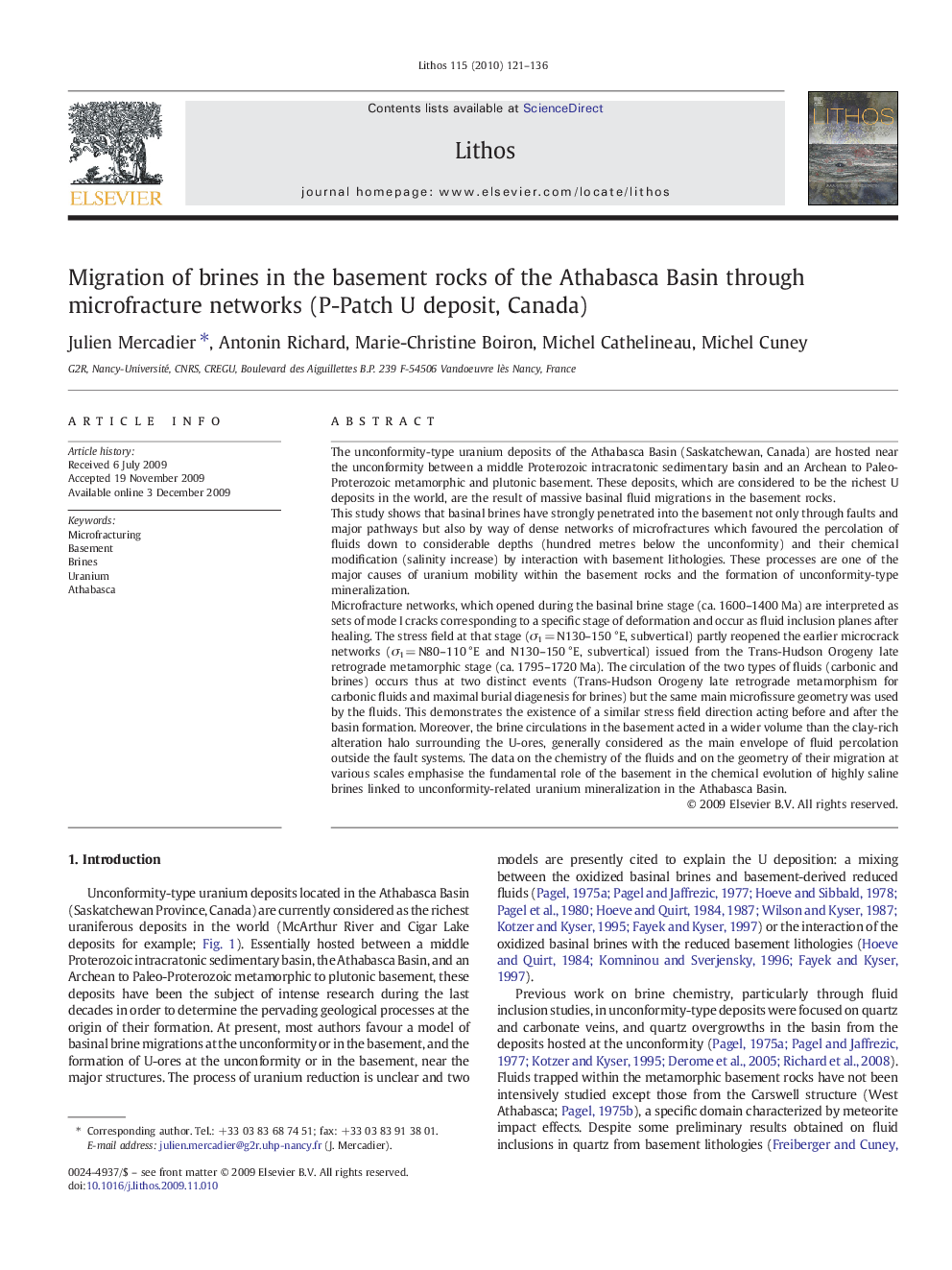| کد مقاله | کد نشریه | سال انتشار | مقاله انگلیسی | نسخه تمام متن |
|---|---|---|---|---|
| 4717034 | 1638735 | 2010 | 16 صفحه PDF | دانلود رایگان |

The unconformity-type uranium deposits of the Athabasca Basin (Saskatchewan, Canada) are hosted near the unconformity between a middle Proterozoic intracratonic sedimentary basin and an Archean to Paleo-Proterozoic metamorphic and plutonic basement. These deposits, which are considered to be the richest U deposits in the world, are the result of massive basinal fluid migrations in the basement rocks.This study shows that basinal brines have strongly penetrated into the basement not only through faults and major pathways but also by way of dense networks of microfractures which favoured the percolation of fluids down to considerable depths (hundred metres below the unconformity) and their chemical modification (salinity increase) by interaction with basement lithologies. These processes are one of the major causes of uranium mobility within the basement rocks and the formation of unconformity-type mineralization.Microfracture networks, which opened during the basinal brine stage (ca. 1600–1400 Ma) are interpreted as sets of mode I cracks corresponding to a specific stage of deformation and occur as fluid inclusion planes after healing. The stress field at that stage (σ1 = N130–150 °E, subvertical) partly reopened the earlier microcrack networks (σ1 = N80–110 °E and N130–150 °E, subvertical) issued from the Trans-Hudson Orogeny late retrograde metamorphic stage (ca. 1795–1720 Ma). The circulation of the two types of fluids (carbonic and brines) occurs thus at two distinct events (Trans-Hudson Orogeny late retrograde metamorphism for carbonic fluids and maximal burial diagenesis for brines) but the same main microfissure geometry was used by the fluids. This demonstrates the existence of a similar stress field direction acting before and after the basin formation. Moreover, the brine circulations in the basement acted in a wider volume than the clay-rich alteration halo surrounding the U-ores, generally considered as the main envelope of fluid percolation outside the fault systems. The data on the chemistry of the fluids and on the geometry of their migration at various scales emphasise the fundamental role of the basement in the chemical evolution of highly saline brines linked to unconformity-related uranium mineralization in the Athabasca Basin.
Journal: Lithos - Volume 115, Issues 1–4, March 2010, Pages 121–136